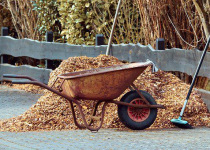Is Timber Flooring Cheaper Than Tiles?
Is Timber Flooring Cheaper Than Tiles? In general, timber floors tend to be more expensive than tiles, so you have to be careful when choosing the right flooring material. But the good news is, there are plenty of ways to save money.
Engineered wood
You might have heard the claim that engineered wood flooring is cheaper than tiles. The truth is that engineered wood floors are not exactly cheap. However, they are cheaper than solid hardwood floors.
Most styles of engineered wood are around $4 to $7 a square foot. Despite that, it is essential to understand the limitations of engineered wood and compare it to other types of flooring.
Engineered wood floors are not waterproof, so they should not be installed in areas highly susceptible to moisture. They also cannot be refinished as often as timber hardwood floors. Luckily, engineered floors are not all that difficult to install.

Another benefit of engineered wood is the fact that it is very durable. Typically, these floors can last 20 to 30 years. And if you need to refinish them, you’ll only need to do it once or twice.
Engineered wood is also more versatile than solid wood planks. Because it is made up of layers of plywood, it has a lattice structure that provides strength and durability. This makes engineered wood a good option for many applications.
Solid wood
One of the most important things to consider when comparing tile and hardwood flooring is cost. You may be tempted to opt for tiles, but keep in mind that tile costs more to install.
In addition, you should consider how long the floor will last. The durability of a floor depends on the type of wood it is made of. Solid hardwood is usually more durable.
Some of the most popular hardwood options include oak, hickory, and pine. They vary in price and quality. A higher grade hardwood may cost as much as $23 per square foot.
On the other hand, engineered wood may be less expensive. It is also easier to install. Typically, you can get engineered wood in pre-finished boards. This means that the surface veneer is already applied.
It can be difficult to find solid hardwood that exceeds four inches wide. Also, it is not recommended for installation on concrete. However, it can be refinished several times.
Laminated faux ‘timber-look’ floors
Laminate faux timber-look floors are modern alternatives to traditional wooden floors. They are made from particle board that has been treated with a faux timber-look finish. These floors are available in a range of designs and styles.
Laminate flooring has the advantage of being easy to install. In addition, it is resistant to moisture. It is also recyclable. However, it does not have the same feel or texture as real wood. So, it is not recommended for bathrooms.
Choosing a laminate floor is an excellent way to save money. Laminates are generally cheaper than structural timber floors. However, the price can vary greatly depending on the type of product. For example, bamboo and porcelain wood are more expensive than laminate.
Another benefit of laminate is the low maintenance. While natural timber needs to be sanded back and refinished, laminates require only a simple wipe-down. Additionally, they are more durable and can stand up to heavy foot traffic.
Another important factor to consider is the cost of installation. Although it is possible to do it yourself, many homeowners opt to hire professionals. This is especially true if the flooring is to be installed in a high-traffic area.
Floating timber floors
There are several different types of flooring available on the market. Depending on your budget, you may want to choose from floating timber floors, engineered timber, bamboo, laminated or hybrid floors. But before you buy, consider the maintenance and installation of each type.
A lot of homeowners like to install floating floors. This type of floor is convenient. It doesn’t require any adhesive or fasteners to hold it in place, which is great if you’re a do-it-yourself kind of person. However, the problem with these floors is that they don’t bond to the subfloor, which can make them prone to buckling.
Some of the more popular alternatives are laminated floors, which mimic the look of real wood without the problems. They are also cheaper than floating timber floors. You can find them for as little as $25 a square metre, which is much cheaper than the cost of structural timber.
Glue down or click lock systems are available for some flooring products. This method eliminates the need for any adhesive or fasteners, and can be installed in just one day.


